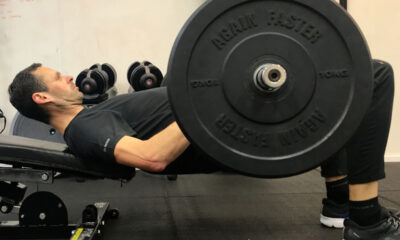
Hill sessions have long been a stable part of a runner’s training schedule; they help to increase leg strength, power, speed, engage the core and promote running with good form, so it’s a no-brainer.
With most runners recognising the benefits, and whether they enjoy them or not, they put the time in (usually in the winter months) sprinting uphill reps on their favourite or not too favourite hill, and jog easily back down to recover, before turning and going again.
And come race day on an undulating course, whether it’s road, cross country or trails, you are ready for the uphill battle you face. But what do you do once you reach the summit, you have spent all that time in training jogging easily down the hill, not running a quick or challenging pace.
Running downhill is not often practised in training, but if you take the time to integrate a specific downhill session into your training every so often it can have huge benefits come race day.
Downhill running does increase the stress on your quads and hamstrings and can cause micro-tears in the muscle fibres leading to sore muscles, but if you give the body adequate recovery time, it positively adapts to this stress and repairs the micro tears and strengthens the tendons. Meaning that the muscles can withstand the strain of running downhill in the future.
Benefits of the downhill training
Running specific sessions in training, such as downhill strides or uphill-downhill repeats helps promote a faster turnover (the number of steps you take in a minute), which help improve your basic speed. This combined with the extra quad and hamstring strength you have built will leave you in a stronger and more comfortable place to reap the full benefits of running down hills come race day.
Err on the side of caution
Running downhill correctly takes time and precision, and because it doesn’t require the same amount of effort, it can be easy to get carried away and run too fast. Add this to bad form and over-striding and it’s a recipe for disaster.
As running downhill encourages over-striding, it’s important that you stay disciplined. To help combat the natural instinct of over-striding try to be light on your feet, look forward, increase your turnover, use your arms for balance and aim to strike the ground as close to your centre of gravity as you can.
Downhill training sessions
Below are a couple of downhill specific sessions that you can experiment with, but remember to err on the side of caution if they are completely new to you and give the body enough time to recover afterwards – recovery is just as important as a specific high-intensity session.
1) Downhill strides/accelerations
If you are unfamiliar with strides, they are a great drill to initiate fast-twitch muscle fibres, without doing a specific high-intensity session and also encourage you to focus on form. They are usually performed after an easy run and involve an acceleration, then holding that pace for a short period of time and decelerating over the final few metres. 100m on flat terrain is the normal distance covered, but there is no set distance to adhere to.
Hopefully, you live in an area surrounded by hills. Seek out one that is roughly 100-160m in length and not too steep, but with a gradual incline ranging between 3-6 percent. Following two of your easy runs during the week, perform six to ten strides lasting roughly 25-seconds; accelerate with a short burst of pace, holding it for 15 seconds, before decelerating again. Perform these both up and downhill.
2) Uphill-Downhill
As mentioned earlier when you run uphill in sessions you tend to jog back down to recover before repeating. As an alternative, run up the hill at a challenging effort, but not as demanding as your normal hill session. When you reach the summit, and if the hill allows, run down the other side at a quick pace, but still maintaining control and focusing on staying light on your feet, keeping your head up and increasing your turnover.
If you can’t run down the other side of the hill, not to worry, simply turn and head back the way you came. In this session seek out a hill with an incline of 5-8 percent and run for 1 to 2 minutes up it. Perform 8 and 12 repeats and take 20 seconds easy jogging or walking between each.













